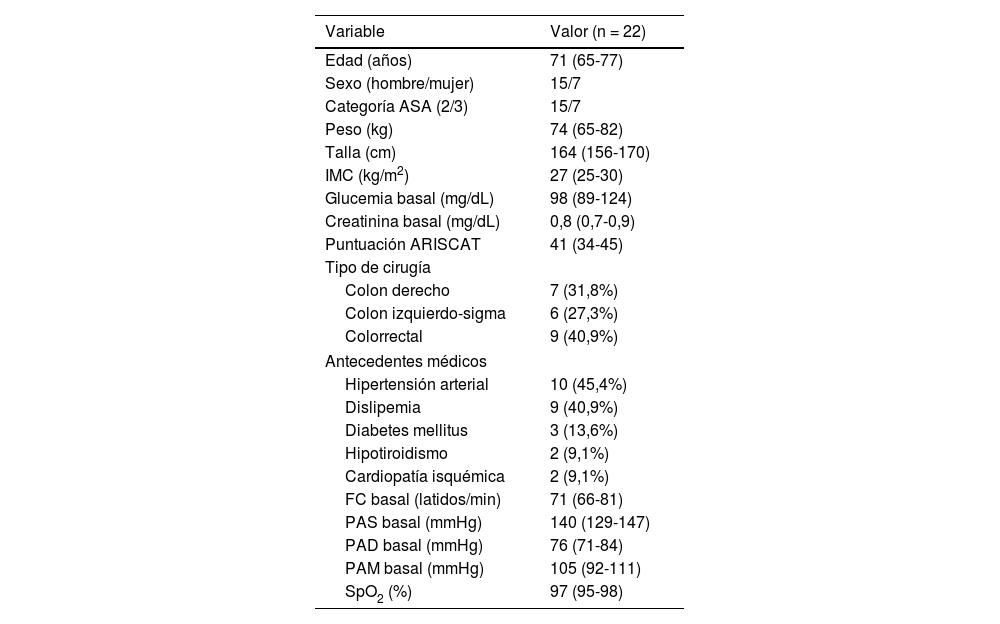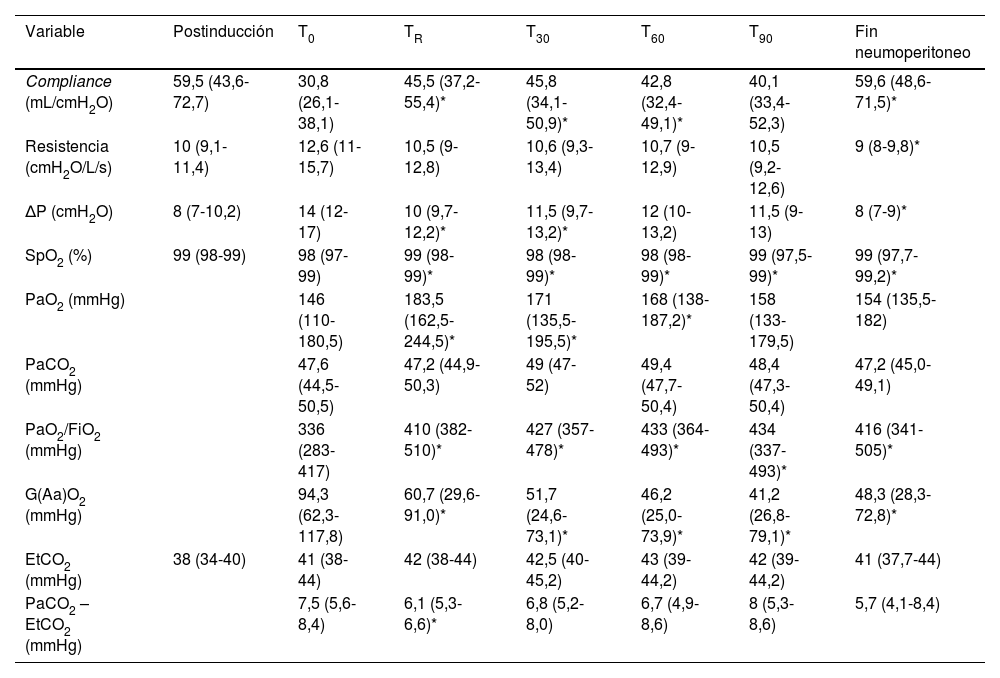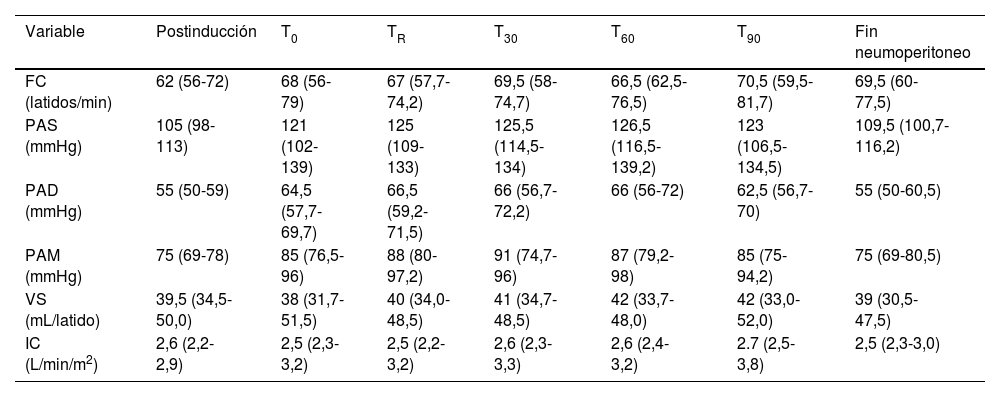Las atelectasias pulmonares son habituales en pacientes sometidos a cirugía abdominal laparoscópica bajo anestesia general, aumentando el riesgo de complicaciones respiratorias perioperatorias. Las maniobras de reclutamiento alveolar (MRA) permiten la reexpansión del parénquima atelectasiado, aunque no está claramente establecida la duración de su beneficio. El objetivo de este estudio fue determinar la efectividad de una MRA en cirugía de colon laparoscópica, la duración de la respuesta en el tiempo y su repercusión hemodinámica.
MétodosSe incluyeron 25 pacientes sometidos a cirugía de colon laparoscópica. Tras la inducción anestésica e inicio de la cirugía con neumoperitoneo, se realizó una MRA y determinación posterior de la PEEP óptima. Se analizaron variables de mecánica respiratoria y de intercambio gaseoso, así como parámetros hemodinámicos, antes de la maniobra y periódicamente durante los 90 min siguientes.
ResultadosTres pacientes fueron excluidos por causas quirúrgicas. El gradiente alveoloarterial de oxígeno pasó de 94,3 (62,3-117,8) mmHg antes a 60,7 (29,6-91,0) mmHg después de la maniobra (p < 0,05). Esta diferencia se mantuvo durante los 90 min del estudio. La compliance dinámica del sistema respiratorio pasó de 31,3 mL/cmH2O (26,1-39,2) antes de la maniobra, a 46,1 mL/cmH2O (37,5-53,5) tras la misma (p < 0,05). Esta diferencia se mantuvo durante 60 min. No se identificaron cambios significativos en ninguna de las variables hemodinámicas estudiadas.
ConclusiónEn pacientes sometidos a cirugía laparoscópica de colon, la realización de una MRA intraoperatoria mejora la mecánica del sistema respiratorio y la oxigenación, sin apreciarse un compromiso hemodinámico asociado. El beneficio de estas maniobras se extiende al menos durante una hora.
Pulmonary atelectasis is common in patients undergoing laparoscopic abdominal surgery under general anaesthesia, which increases the risk of perioperative respiratory complications. Alveolar recruitment manoeuvres (ARM) are used to open up the lung parenchyma with atelectasis, although the duration of their benefit has not been clearly established. The aim of this study was to determine the effectiveness of an ARM in laparoscopic colon surgery, the duration of response over time, and its haemodynamic impact.
MethodsTwenty-five patients undergoing laparoscopic colon surgery were included. After anaesthetic induction and initiation of surgery with pneumoperitoneum, an ARM was performed, and then optimal PEEP determined. Respiratory mechanics and gas exchange variables, and haemodynamic parameters, were analysed before the manoeuvre and periodically over the following 90 minutes.
ResultsThree patients were excluded for surgical reasons. The alveolar arterial oxygen gradient went from 94.3 (62.3-117.8) mmHg before to 60.7 (29.6-91.0) mmHg after the manoeuvre (P < .05). This difference was maintained during the 90 minutes of the study. Dynamic compliance of the respiratory system went from 31.3 ml/cmH2O (26.1-39.2) before the manoeuvre to 46.1 ml/cmH2O (37.5-53.5) after the manoeuvre (P < .05). This difference was maintained for 60 minutes. No significant changes were identified in any of the haemodynamic variables studied.
ConclusionIn patients undergoing laparoscopic colon surgery, performing an intraoperative ARM improves the mechanics of the respiratory system and oxygenation, without associated haemodynamic compromise. The benefit of these manoeuvres lasts for at least one hour.














